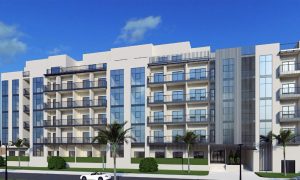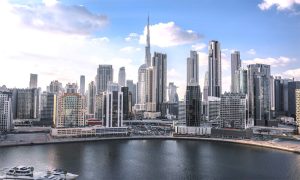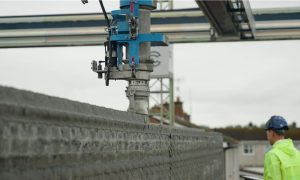Rich real estate: The Qatar property market
Anum Hasan, a Market Research Analyst at ValuStrat, examines residential real estate in one of the world’s richest countries, Qatar

Like other GCC countries, Qatar’s economic growth is forecast to decelerate in 2017, to approximately 3.9%, mirroring the fall in oil prices. Despite the instability in oil prices, however, the real estate sector has remained resilient and is deemed one of Qatar’s most important economic barometers.
The government of Qatar is committed to adhering to its spending in capital projects – forecast to account for 47% of total expenditure in 2017 (a 2% increase from 2016) – to not only support the 2022 World Cup, but also to provide a buffer against the regional and economic challenges the country is facing.
During 2017, the country will also sign new construction contracts worth QR 46.1 billion. Consequently, due to a steady rise in supply, Qatar will likely transform into a buyer’s market. Per ValuStrat research, this is reflected by the increasing gap between listed and transaction prices of residential properties in favour of buyers.
Doha, Qatar’s most populous municipality, has the highest number of total sales transactions and prices for residential properties, per data from the Ministry of Justice (MOJ). Currently three out of four freehold zone properties (Pearl Qatar, Lusail and West Bay Lagoon) are in Doha, and it also has the highest number of leasehold properties, where foreigners can lease property for 99 years.
In 2016, 50% of the sales transactions recorded in Doha were in residential properties. The majority were residential units (villas and bungalows), followed by land plots. Compared to 2015, there was a decline in price per sq m of residential units by approximately 10% y-o-y, except for Madinat Khalifa South, where the price of residential units remained stable.
The Al Thumama area had the highest number of transactions for residential land plots, whereas in the Al Sadd area, there was an increase in the sale of residential buildings, though the price per sq m declined by at least 10% y-o-y. In Old Al Ghanim there has been a fall in price per sq m for residential buildings since 2015; however, price per sq m for mixed used buildings has increased by approximately 5% y-o-y. In The Pearl and West Bay Lagoon area, the price per sq m for residential villas and bungalows sold remained stable.
In 2016, the most popular area in Al Rayyan Municipality – with the highest sales transactions – was Muaither, followed by New Al Rayyan, Al Gharafa, Muraikh and Ain Khalid. Since 2015 in Muaither, there has been a steady decline in average price per sq m, mostly for residential units.
The number of transactions for villas and bungalows remained static in Al Gharafa, though there was an increase in the average price per sq m of approximately 5% y-o-y. In Al Waab in 2016, the number of residential units sold remained the same as in 2015, with the price per sq m for residential houses declining by approximately 10%.
Lusail City, north of Doha, is an estimated QR 160 billion planned development under construction which will add to the real estate landscape of Qatar and is expected to provide housing to 200,000 residents.
For those considering an investment in Qatar, it is advisable to be vigilant regarding the current rental trends as well as the price. In the past year, there has been declining demand for high-end residential units, due to a fall in white-collar workers reducing rents. ValuStrat research shows that, on average in the past year, rent per sq m has decreased by approximately 8-10% in areas such as Al Sadd, Bin Mahmoud, Abu Hamour, Ain Khalid and The Pearl. Property yields will be more attractive, so long as prices fall at a faster pace compared to rents. In Qatar, the rate of return is an important factor, as approximately 60% of residential properties are rented, reflected by a high number of expatriates in the country.
However, rent is expected to remain stable throughout 2017, especially for mid-income housing. This can be attributed to the predicted gradual rise in demand, as a result of changing demographics, the rise of middle- and low-income segments, and stabilisation of oil prices. In the longer term, falling prices and stable rents make a good case for tenants to consider home ownership and for some investors to seek out properties with attractive yields.






















